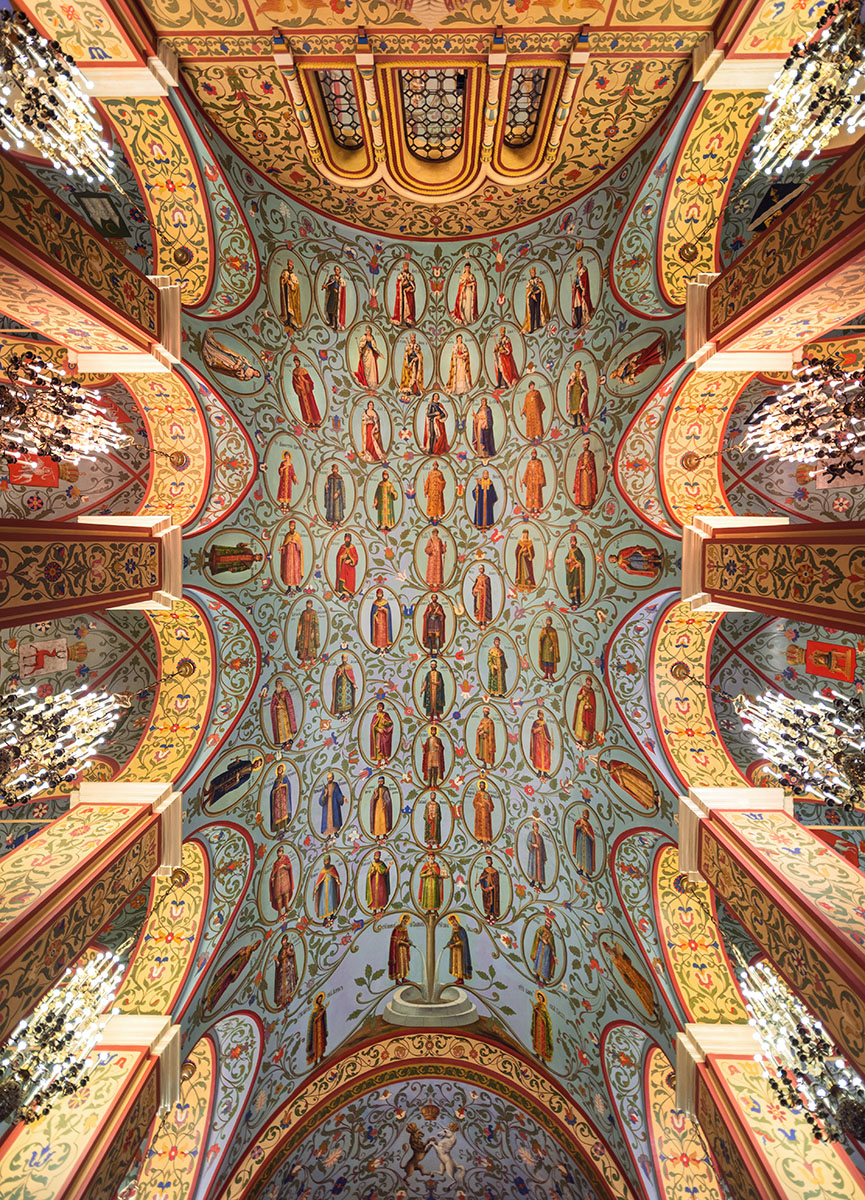In Russia it is often the case that the museums themselves (meaning the buildings where they are housed) are as beautiful and as interesting, if not more, than the artwork they display.
One of such examples is, I think, the State Historical Museum of Russia in Moscow.

Housed in one of Russia’s most recognisable structures, wedged between Red Square and Manege Square, the red-brick building was built based on Vladimir Osipovich Sherwood‘s neo-Russian design between 1875 and 1881.
The first 11 exhibit halls officially opened in 1883 during a visit from the Tsar and his wife. Then in 1894 Tsar Alexander III became the honorary president of the museum and the following year, 1895, the museum was renamed the Tsar Alexander III Imperial Russian History Museum. Its interiors were intricately decorated in the Russian Revival style by such artists as Viktor Vasnetsov, Henrik Semiradsky, and Ivan Aivazovsky.
During the Soviet period the murals were proclaimed gaudy and were plastered over. Luckily, though, after the fall of the Soviet Union, the museum went through a painstaking restoration of its original appearance between 1986 and 1997 and today it is once again possible to admire the splendour of the past.
Nowadays the entrance is on the street that takes you from Manege Square to the Red Square, in front of the small, but delightful Kazan Cathedral (actually a 1993 replica of a destroyed 1600s Russian Orthodox church). The entrance itself is rather unimpressive and it is right next door to a garish souvenir shop, usually with a man in an ancient Russian costume inviting visitors to enter (the shop).
Once past the ticket office (somewhat hidden in side room on the left) and the sadly ubiquitous security controls, it is time for a bit of fitness. It is time to walk down a flight of stairs to the wardrobe and then up two flights to the first hall of the museum.
That is a huge hall, covered with gold and rich paintings. In the central vault you can see the painting The family tree of the rulers of Russia created by the Russian artist F. Toropov in 1883 (and pictured at the beginning of the post). It represents the entire history of the rulers of Russia with a portrait of each of them. There is 68 in total beginning with Princess Olga of Kiev (a regent of Kievan Rus’ for her son Svyatoslav from 945 until 960) and St. Vladimir. The lateral arches depict the arms of the parts of the Russian Empire, listed in the imperial title. The ceiling and walls are decorated with floral ornaments in the XVI-XVII century style. This motif was borrowed from the painting of the royal place in Novgorod’s St. Sophia Cathedral. The pylons of the marble staircase are guarded by lions, modeled after the figures of the nearby Palace of Facets inside the Moscow Kremlin.
Would you like to take part in a photowalk or a photo tour of Moscow or any other Russian destination with an English (and Italian, Spanish and French) speaking photographer (me) showing you the sights, the best time and viewpoint(s) to capture them in your images and helping you improve your photo technique with practical tips? If so, do get in touch and we’ll be happy to create an unforgettable, tailor-made experience for you!
If you found this post useful, interesting or entertaining, please do consider becoming a Patron of this blog. Every little bit (starting from 1$) helps a lot and you get exclusive bonuses!
Thank you!



Leave a comment